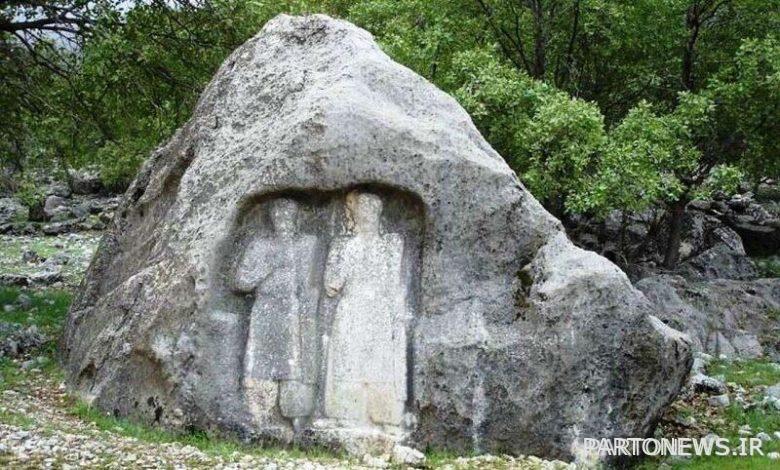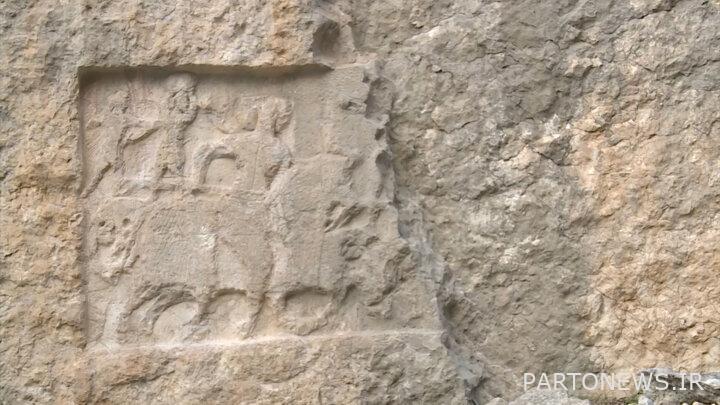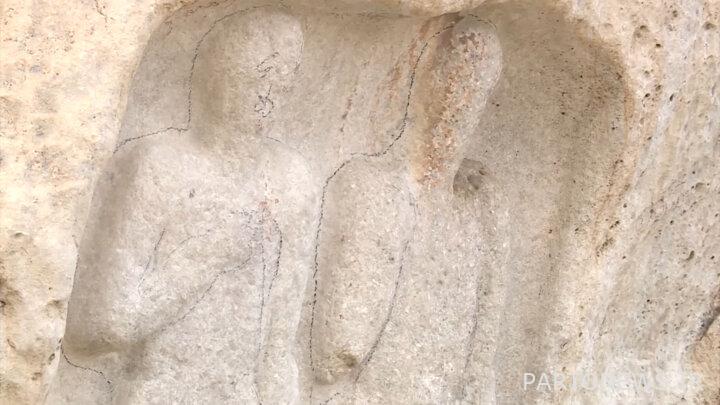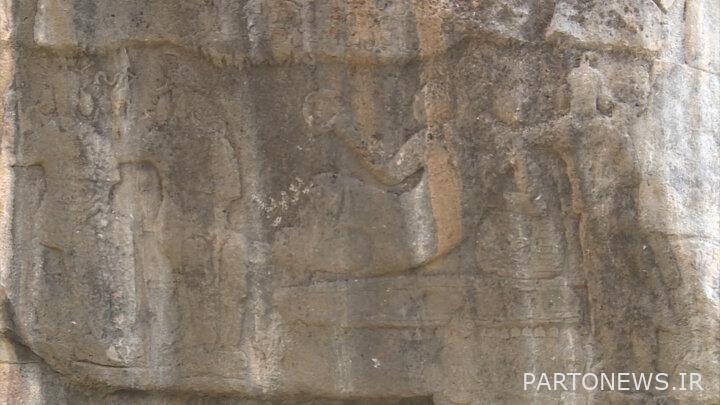The ancient “Solk” gorge is a manifestation of the link between history and nature

“Solek” or “Soruk” gorge in Kohgiluyeh and Boyer Ahmad despite the reliefs left over from ancient Iran, having a favorable climate and beautiful nature is a unique attraction for those interested in tourism in these winter days. The Parthian rule of the Al-Tawaifi monarchs and the Elymai dynasty is also one of the most powerful local governments of the Parthian dynasty. This place well depicts the characteristics of the Elymai rule of the Parthian period. The stone inscriptions of the Elymai (Ashkan) period in the Sulek gorge with the horse road Old pavement, carvings of the heart of the mountain and unique golden cedars, Gordak Spring attributed to the legendary Iranian warrior Guderz can be a memorable destination for travel enthusiasts in all months of the year except July and August.
The historical heritage of the reliefs of “Tang Sulek” which stands out near a green valley covered with oak and cypress trees, 12 kilometers northeast of the city of Likk and between the mountains of Bahmei city, in the provinces of Kohgiluyeh and Boyer Ahmad, is presented in Fars Nameh Naseri with The name “Sulak” means the neck of small cedars.
“Solek” narrow motifs include 40 people and animals such as horses, lions and birds. In these motifs, weapons such as long spears, swords, daggers, clubs, hatchets, clubs, bows, arrows, shrapnel and flag motifs are carved.
There are several permanent and seasonal springs in the mentioned area, among these springs, Gordak spring has significant water supply and is considered very important for the wildlife of the region.
The narrow reliefs of “Solek” which is located in an environmental protection area are of natural importance from the point of view of vegetation with medicinal, edible and ornamental plants, and medicinal and edible plants such as bensarkh, halpa, tare, kardeh, yarrow, pashmuk , artichokes, tulips and thyme, as well as dense forests of oak and other different species cover this area.
Manifestations of Ancient Iranian Culture in Tang “Sulak”
The main bas-relief of Tang “Sulak” carved on a rock in a high valley of the foothills of the Zagros in Behmai city, has been attributed to an Elimaid prince who was a Parthian prince.

These inscriptions and inscriptions were identified for the first time in 1275 A.H. at the end of the reign of Muhammad Shah Qajar by Baron Dubod Jahangard and the first secretary of the Russian Embassy, and then in 1322 A.H. they were examined by Sir Orel Stein of England.
One of the relief motifs shows the figure of 2 people standing with a Qoba and trousers in the style of Parthian era clothes, another figure of a person lying on a bed and about 600 meters away in a set of other relief motifs, which is probably the main part of this Majlis. and in the upper row from the left part, a person who may be the king is sitting on a throne, people are standing on his sides, and in the middle role, a rider is attacking a lion.
In the southern part, a man is fighting with a lion, and on the northwest side of this stone, a spiritual person is standing next to a fire pit, and the fire pit is on a three-story platform, and on the bottom floor of this platform, an inscription in the Parthian style can be seen.
On its northern facade, a two-story hall can be seen. On the upper floor, a man is sleeping and holding a crown, and on the left side of this person, three soldiers are holding spears, and behind them are lines written in Pahlavi language. The bottom floor shows a shape like three people. At a short distance on the north side of this stone is another relief, on the south side of which a horse rider is shown.

Also, a prince is depicted as a rider who kills a lion or engages in a battle with an enemy, and this is for a society that lives on horseback, elsewhere the same prince is seen standing and larger than the other people in the scene, and a prince He sits on the throne, then in front of an altar which is in the shape of a conical stone slab and on it is a Dehimy who is standing in praise, then on the left side on a throne which is on the base of three eagles, he sits in the Iranian style and hands He opened his right hand with the ring of power towards two of his subordinate leaders.
A little further away is a hall in which a god confers status on a prince, and after that a battle scene of a king riding a horse, himself and Elsteen wearing armor, attacking the enemy with his spear.
Infrastructure created in this area
The head of Bahamei Cultural Heritage, Handicrafts and Tourism Department said: “Sulak” Tang was registered in the list of national monuments as the first cultural heritage of the province in 1316, and according to tourists and experts, it has the ability to be registered in the world heritage list.

Mojtabi Salahinejad stated: In this ancient region, various scenes of magnificent ancient rituals, religious symbols, cavalry and infantry battles, coronation, coronation, taking the ring of power in the presence of the gods, royal hunting, ceremonies and welcoming have been depicted. It is a trace of the glorious civilization of ancient Iran.
He emphasized: “Several strengthening projects have been carried out on the reliefs of the narrow stones of “Sulak” in recent years, and this year, the main reliefs of this area are also going to be strengthened.
He stated: The access road leading to Tang Solek is dirt because it is located in the heart of a protected area and has environmental barriers for asphalt, and tourists walk the road to reach the area.
The head of the Department of Cultural Heritage, Handicrafts and Tourism of Bahmai noted that “Sulak” gorge can be of interest to researchers interested in historical and natural fields in addition to tourists.
Salahinejad said: This area, which is the destination of thousands of Iranian tourists and tourists every year, has a tourist camp where travelers can set up tents.
Tang Maghar with its vegetation and pleasant climate, Baram Alwan Lake with its beautiful nature, Shosh Kanan recreational and mountainous area on the beautiful shores of the Maroon Dam, the shrine of Imamzadegan Seyyed Asadullah and Seyyed Ibrahim (AS) with its pleasant climate and the shrine of Imamzadeh Baba Ahmad (AS) with the architecture of the Seljuk period, it is one of the other tourist attractions of Bahmai city.
Except in the east, which borders with Kohgiluyeh in the province, Behmai city borders with Baghmelek in the north, Behbahan in the south, Ramhormoz in the west, and Omidiyeh and Aghajari in the southwest of Khuzestan province.
This city with a population of about 38,000 people is located in the center of Likk, 300 km away from Yasuj, the center of Kohgiluyeh and Boyar Ahmad.
Kohgiluyeh and Boyar Ahmad were a part of Elam civilization and in the period after Islam and also after the arrival of Aryans, it was part of the soil of all Iranian governments.
In different historical periods, this province was known by names such as Balad Shapur, Jabal Gilouye and Kohgilouye.
Kohgiluyeh and Boyer Ahmad province consists of 9 counties, 17 cities and 1,700 inhabited villages with a population of 726,000 people located in the southwest of the country.


